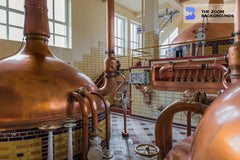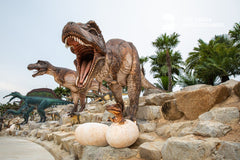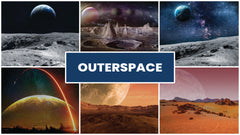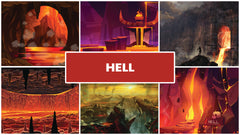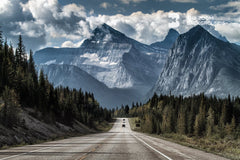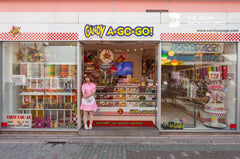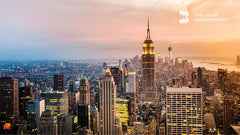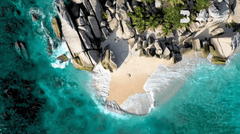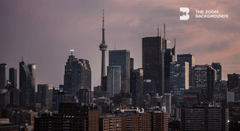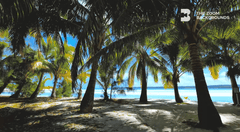
Discover what a pocket of unexposed film can get you.
Our profile of the legendary street photographer.
Street Photography
It’s been said photographs are a return ticket to a moment otherwise gone. In and of itself, a photograph does not simply give you an image to see; it also gives you the chance to observe it in the way you personally feel and experience it. Each frame memorializes a moment in time but it also does something much more: it reveals an honest truth, most notably more about yourself and individual frame of reference as opposed to the intentions of the photographer.
When such photographs are borne of street photography, those captured moments translate to something that may be more often than not elusive to the untrained eye. While many of us can walk throughout public spaces relatively unscratched in terms of what we observe and notice, the inquisitive and intentional eye of a street photographer simply sees things we might otherwise overlook, creating a rather unique perspective that jumps the divide between ordinary and extraordinary.
UK Street Photographer
David Gibson is one such photographer. Upon first meeting this imaginative, clever and talented professional, if you sense an inquisitive mind coupled with an inventive and gifted viewpoint, please do not waver from that initial conclusion. For three decades, Gibson has taken street photographs and was a founding member of iN-PUBLiC (2000), a street photographers collective, which has since changed its name to UP Photographers Collective. Not only is he adept at the visual arts, he also wields a mighty pen and has written a few best sellers in his genre, including The Street Photographer’s Manual (2014), which has been translated into seven languages; 100 Great Street Photographs (2017); and Street Photography: A History in 100 Iconic Images (2019). Additionally, he has conducted street photography workshops in myriad high-profile locales around the globe, including London, Beirut, Singapore, Krakow and Cork.
David Gibson Artist Background
Based in London, Gibson was born in 1957 in Essex, United Kingdom. In the early stages of his career, his photographic work focused primarily on the elderly, children and the disabled. To complement his professional role, he earned a Master of Arts degree in Photography: History and Culture from the University of the Arts London in 2002.
Street photography is an art form that allows for the subtlety of its subject matter to be captured in random, spontaneous moments in often candid shots without intentional deference to purpose and meaning, as those will reveal themselves later through whatever personal lens its audience observes them. Gibson drew his first photographic breath through he inspirations of Henri Cartier-Bresson, Elliott Erwitt and Marc Riboud. He navigated a rather steep yet enriching learning curve in the 1980s, feeling a connection to the work of numerous photographers in whose language of creativity he realized he was becoming fluent. Over time, he began to resonate with documentary/humanistic photography, and in the early 1990s, he began to take to the streets in striking fashion.
David Gibson Photo Critique
Instead of trying to understand the why of Gibson’s draw to the streets, perhaps the question is better steeped as Why not? It’s there. It’s free. Its potential is virtually unlimited. To frame his answer as to why he does this would only serve to subjugate the meaning of his photographs. Instead, the what that attracts him on the streets stands as an answer to every why. Translation? He lets each image speak for itself. And those images are always up for viewer interpretation. To suggest otherwise might seem pretentious or arrogant. Gibson never professes to be an esoteric fountain of knowledge and instead seemingly prefers to learn from each frame that advances through his camera.
To that end, Gibson is rarely without his camera. Much like most of us would never presume to leave home without our handheld devices, Gibson would most likely shudder at the thought of not having his camera at the ready no matter where he finds himself in this world. Regret over a moment lost is not an image he wishes to envision. However, instead of responding in deference to what can be an ever-temperamental audience, Gibson does not operate from behind the lens in pursuit of constant praise and adoration. Instead, he focuses on what he personally likes, enjoys, and appreciates. If it inspires him, then so be it. He lets his audience determine what they like and don’t like but never lingers long on the commentary. To do so would seem to interrupt his seemingly endless creativity and ever-advancing inspiration.
This begs the inquiry that there has to be a process by which Gibson observes the world around him. He struggles with the question, however, which he suggests can be quite complex in its offering. For a simple response, Gibson might suggest he has always enjoyed being a wanderer, a peripatetic pontificator using the language of film. As his portfolio expanded, he likened taking photographs as both a companion and a purpose, but those two ideals did not develop overnight. For him, it was a gradual process.
David Gibson BeginingsIn the 1980s, Gibson lived in Australia and took ample photographs while there, perhaps more by choice than chance. He then relocated to New Zealand and realized a keen sense that taking photographs was more akin to a travel diary of sorts. It wasn’t until he completed a two-year course in photography in Kent in the late 1980s that he transitioned from the gradual development of a purpose into full appreciation of that which resonated with him and inspired him: the street.
While one could presume Gibson would never be one to intentionally toot his own horn, the accolades continue to expand throughout his photographic repertoire. In fact, his work is held in the permanent collection at the Museum of London. He is also celebrated at the Museum of the City of New York and in France, Bangkok and Stockholm.
Among the exhibitions Gibson has displayed his works, either with others or during festivals.
Upon studying Gibson’s photographs, one is led more to experience a feeling rather than simply what a particular moment looks like. Over time, he has understood where to stand so that his audience gains momentum and understanding in where to look. If one takes away anything from Gibson’s collection, it is to realize he has cornered the market on capturing the humanity of the moment.
Sources:
- Onto the Streets, Photofusion, London, 21 July – 16 September 2006, then toured with the British Council.[7] Curated by Stephen McLaren and Sophie Howarth.
- in-public @ 10, Photofusion, Brixton, London, 28 May – 9 July 2010.[8][9][n 2] Travelled to Les Ballades Photographiques de Seyssel, Seyssel, France, 12–23 July 2011.[10][11] Included photographs by various In-Public members.
- Street Photography Now, Third Floor Gallery, Cardiff, 10 October – 14 November 2010. Photographs featured in the book Street Photography Now (2011).[12]
- Derby Museum and Art Gallery, Format International Photography Festival, Derby, UK, 4 March – 3 April 2011. Exhibition of photographs by various In-Public members, and the film In-Sight (2011).[13][14][15]
- London Street Photography: 1860-2010, Museum of London, London, 18 February – 4 September 2011. Included work by Gibson and others.[16] Travelled to the Museum of the City of New York, 27 July – 2 December 2012. [17]
- Contemporary London Street Photography, London Festival of Photography, London, June–August 2012.[18]
- iN-PUBLiC: An Exhibition of Street Photography, Thailand Creative and Design Centre, Bangkok, Thailand, February–March 2013. In conjunction with the British Council.[19][20][21] Photographs by various In-Public members.
- In Public, Snickerbacken 7, Stockholm, Sweden, May–June 2013.[22] Photographs by various In-Public members.
- The Sharp Eye. In-Public in Mexico, Foto Mexico, Cine Tonalá, Mexico City, Mexico, October–November 2015. Slideshow of photographs by various In-Public members. Curated by Mark Powell, Carlos Álvarez Montero and Alfredo Esparza.[23]









